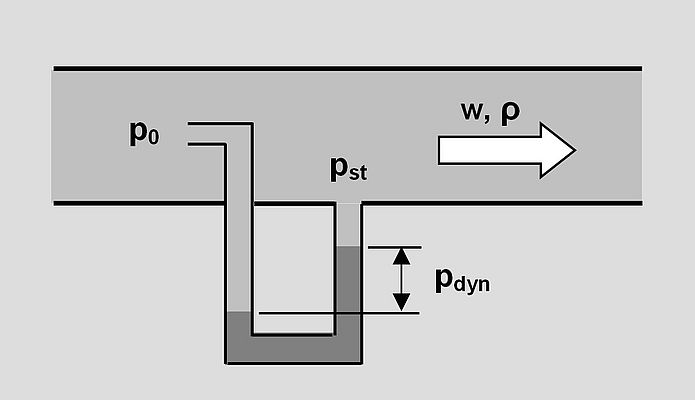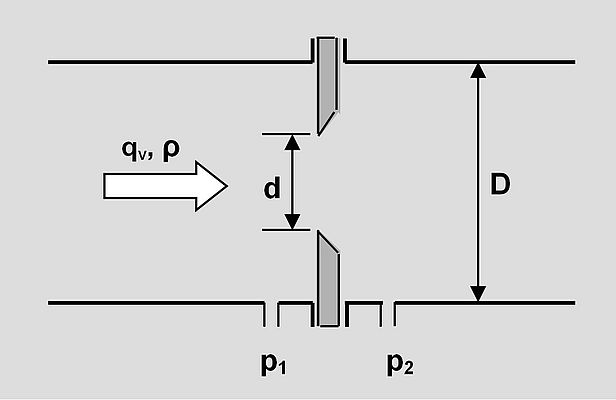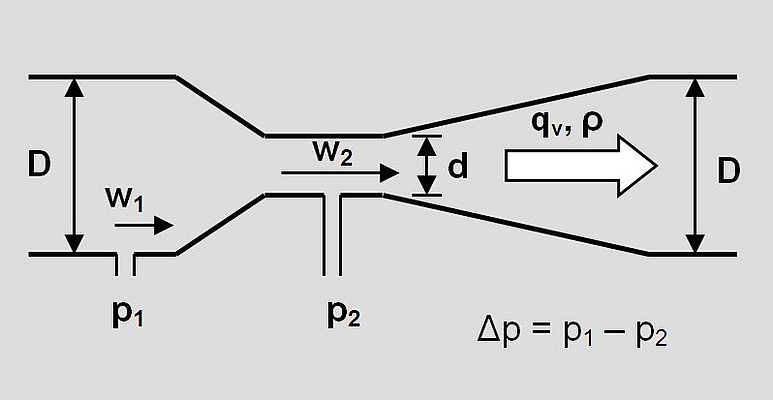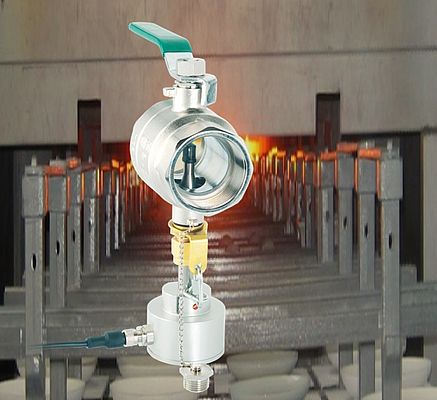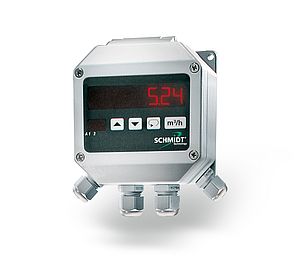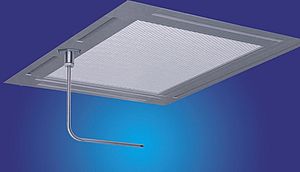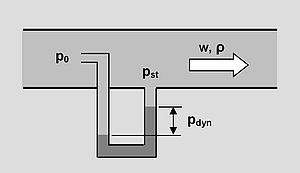There are different measurement principles for measuring flow velocities and volumetric flows in air and gases. The following comparison clearly shows why the thermal anemometry is, in most of the cases, an adequate solution.
To determine the flow velocities and/or the volume flows, it is necessary to know the characteristics of the possible measuring processes in order to choose the ideal solution for the respective requirements. Pitot tubes, orifice plates, Venturi tube or the thermal anemometry are normally used for this purpose.
The Prandtl pitot tube
The flow velocities can be measured using a Prandtl pitot tube. The dynamic pressure is measured as a difference between the total pressure and the static pressure via two measuring connections of the pitot tube. The pitot tube measurement is relatively insensitive regarding contamination or flow turbulences. Due to its design, the pitot tube "blocks" the flow profile to a very low degree which causes a slight loss of pressure. Moreover, the pressure and the temperature of the medium must be also measured for a precise determination of the flow velocity. Due to the principle, the dynamic pressure increases squared compared to the flow velocity. Since the pressure increases very slowly at the beginning, this measurement method is not suitable for low flow velocities such as they occur in the room air monitoring.
The orifice plate
A frequently used method for volume flow measurement is based on orifice plates. That means that the flow is reduced by means of a tube to obtain a specified reduction of the diameter. Therefore the flow can be derived from the pressure loss on the diameter restriction, i.e. the orifice plate. For this, the static pressure difference in front of and behind the plate is measured and used for the calculation of the volume flow. The simply structured measuring inserts can also be integrated in short tube sections. The strong reduction of the flow diameter, however, causes a high loss of pressure. Dirt deposits on the orifice plate may also falsify the measurement results.
The Venturi tube
A highly precise flow measurement can be reached using a Venturi tube or, the shorter version, a Venturi nozzle. Thanks to a reduced differential pressure, the pressure loss is lower than for an orifice plate. But this requires an extremely long flow restrictor. The construction of these tubes is normally very complex and requires exacting tolerances to guarantee precise measurement results.
The thermal anemometers
The thermal anemometry which is also called hot-wire anemometry is based on the equilibrium between heat generation and heat removal by forced convection. The basic principles have already been examined in the year 1914 using the example of a heated metal wire. If such a body is located in a flowing medium, its surface yields thermal energy to the surroundings. This heat flow is proportional to the contact surface and to the temperature difference between the heating element and the fluid. The capability to absorb of the thermal energy increases with the flow velocity. This heat transfer is based on the interaction between the conduction of heat and a material carrying effect which is also called convection.
To measure the flow velocities, the heating performance can be kept on a constant level and the cooling down is measured in form of a temperature difference. As an alternative, the so-called CTD method (Constant Temperature Difference) is used to regulate the temperature difference to a constant level and the heating performance depending on the mass flow is determined. By this, a strong output signal is generated over a broad measuring range which allows a sensitive measurement particularly in the lower measuring range of the sensor. Furthermore, the measurement of the mass flow is independent of the pressure and temperature of the medium.
In addition to the heat transfer principle, the thermal anemometry offers with the so-called thermo gravity balance another measurement method which can also be used for the detection of the flow direction.
The miniaturization of the measuring elements allow the design of compact sensors with a low power consumption between 100 mW and 2.5 W. Thanks to a measuring range of a flow velocity between 0.05 to 200 m/s, thermal anemometers provide exact measurement results in a wide application range. The application range includes the industrial use in processes, the classic compressed air monitoring and the use in heating, air-conditioning and ventilation systems up to the cleanroom technology of the chemical and pharmaceutical industry or the semiconductor production.


